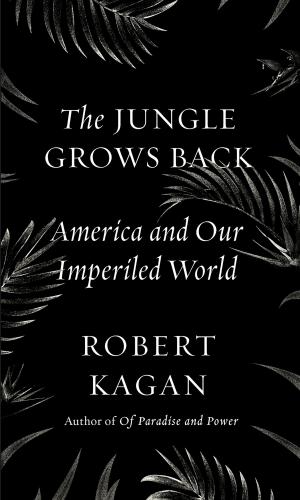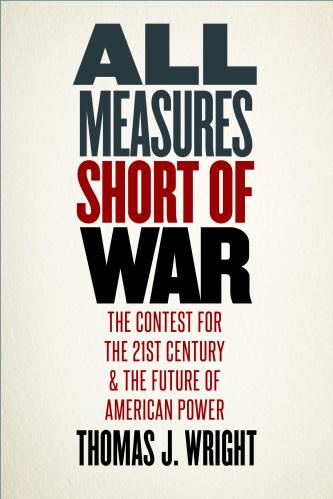International cooperation, structured around organizations and underpinned by a commitment from great powers — starting with the United States — reaps manifold benefits, write Elizabeth Cousens and Jeffrey Feltman. This piece was originally published by the U.N. Foundation.
One hundred years ago, nearly to this day, a bloodletting that had convulsed the world for four years came to an end in a train car. On the 11th hour of the 11th day of the 11th month of 1918, World War I ended with the stroke of a pen. The “Great War,” as it was called, consumed 17 million souls by the time it was over — closer to 100 million if you count the flu pandemic that followed in its wake. World War I collapsed empires and spurred revolutions. It brought us poison gas, shell shock — the forerunner of PTSD — and genocides as a tool of modern war. It taught us the lethal connections between war and disease.
World War I was never supposed to have happened. At a time when people were at the start of a new century, expanding global commerce and interconnections, and celebrating new technologies like the telephone, it was easy to take one’s eye off the rising nationalism that would soon make Europe a tinderbox and engulf the world in its flames. In 1914, all it took amid ambitious world powers who operated by secret deals, competing alliances, and mistrust was the assassination of a comparatively marginal figure to trigger the escalation to total war. The British historian Christopher Clark called the wind-up to World War I “sleepwalking” into war, and by most reckonings it was a predictable but thoroughly unnecessary tragedy.
When it ended, there was supposed to be lasting peace. This was to be the “War to End All War,” whose horror was so visceral it could never happen again. By the 1918 armistice, the shock of the war’s unprecedented death and destruction provoked innovative efforts to end the system of alliances that had served as dry tinder for global conflagration and create a new, permanent foundation for peace. But the resulting League of Nations never captured the political imagination of the powerful. No great powers stepped up to lead, the Great Depression happened, leaders looked inward, and an even more destructive global war unfolded only two decades later — also predictable, also with jumping off points (not to mention early stepping up points), also with a summoning of resolve only late in the day and after unspeakable human suffering.
It was the aftermath of this second great war, World War II, that gave us the United Nations.
But this time, a few things were different. This time, the world’s great powers — however uneasy the relations among them — forged an organization that reflected their deepest interests. This time, they committed to share responsibility for collective security. This time, there was also a singular leader in the form of the United States and its citizens.
With tens of millions of people killed and national economies shattered twice in only 30 years, American support for a strong international body surged from war-scarred leaders and civilians alike. American opinion polls in 1945 showed over 80 percent backing for the creation of the UN. Harry Truman devoted much of his first State of the Union address to proposals to strengthen the new UN. American cities vied to host the organization, American towns drafted resolutions of support, and citizens widely welcomed this new body and U.S. leadership within it, together with the network of new postwar alliances, that helped the United States project influence based on shared interests and values. The United States found new national confidence, and isolation was decisively replaced by U.S. leadership on the world stage and bipartisan American support for it. Peace was not a partisan issue.
People in other countries, too, took new approaches after 1945, encouraged by the American example, often with U.S. support, and moved in some fashion by a belief in human progress and a rejection of aggressive and genocidal nationalism.
The nearly 75 years that followed, between the founding of the UN and today, had their own darkness — they saw strains, nuclear brinkmanship, civil wars, and humanitarian catastrophes — including the collective shame unfolding now in Yemen.
But here is what those years also saw. The world’s great powers — even at their most combative –maintained peace. The nuclear genie stayed in its bottle. Europe and Japan were rebuilt. Dozens of new countries gained independence. The stability of this period created conditions for staggering gains in the global economy, including lifting hundreds of millions out of extreme poverty. And oh, by the way, we vanquished smallpox and closed the hole in the ozone layer.
It turns out that international cooperation, structured around organizations and underpinned by a commitment from great powers — starting with the United States — reaps manifold benefits.
And it still does.
Today, opinion polls indicate that a majority of Americans support the UN and U.S. leadership therein. Republicans and Democrats, young and old, have shown remarkably consistent support for this bedrock instrument for U.S. leadership and pursuit of national priorities.
Yet we should not kid ourselves. With the passing of the World War II generation, this support is a remove from the searing real world experience that led up to 1918 or 1945 and shaped that generation’s determination not to make the same mistakes. The level of personal and civic commitment that spawned pro-UN town hall meetings across the country in the 1940s and created the United Nations Association of the United States in 1943 will need to be recreated and renewed.
The lessons of 1945 were supposed to be indelible, with an arc that bent only one way.
Now, with the 100th anniversary of the armistice this week and the 75th anniversary of the founding of the UN approaching in 2020, we seem to need a refresher course in why we bloodied ourselves so ferociously twice in the last century — and how we have so far avoided a repeat performance. The world leaders gathering in Paris on November 11 to remember the armistice should have this task foremost in mind.
We are again at the dawn of a new century. We again face giddying technological advance. Even more than 100 years ago, we are connected to one another. Yet our gaze risks turning inward from the horizon. Nationalist leaders in many parts of the world are again stoking fear and resentment. Regional and international tensions are rising. American leaders are again tempted by fantasies of going it alone — perhaps forgetting the indispensability of American leadership after 1945 and taking our eyes off the extensive framework of non-coercive, mutually beneficial partnerships that were essential to the American and global prosperity we benefit from today. Facts may be endangered these days, but the fact that all Americans gain from U.S. leadership in the world and a cooperative international order is manifold and overwhelming.
Between us, our careers have spanned the U.S. State Department and the UN and covered some of the most vexing national security challenges of the day, from the Middle East to the Balkans. We have been privileged to serve our country and to see how U.S. national interests are advanced by the UN, which still serves as a force multiplier and unparalleled platform for burden sharing — let alone a vehicle for mobilizing common effort around shared interests and values.
One hundred years on, with worrying echoes of the 1910s and 1930s, we need to fix our gaze on the right horizon. Especially given the lethality of today’s weaponry, we must re-learn the lessons absorbed by previous generations — without needing to repeat their horrors. We know where some choices lead, with grim inevitability. As we face the future, let us choose differently. Let us choose well. Let us choose peace.
The Brookings Institution is committed to quality, independence, and impact.
We are supported by a diverse array of funders. In line with our values and policies, each Brookings publication represents the sole views of its author(s).








Commentary
Extremely loud and uncomfortably close: Lessons of the “Great War” 100 years on
November 9, 2018